3-Way Low Profile CPU Cooling Shoot-Out: Reeven, Phanteks, & Noctua
by E. Fylladitakis on January 18, 2017 8:00 AM EST- Posted in
- Cases/Cooling/PSUs
- Noctua
- Phanteks
- Cooler
- Reeven
The Reeven Steropes RC-1206b
Reeven supplies the Steropes inside a dark cardboard box, with the aesthetic design following the black/gold theme of the brand. The box is small, but it is a lightweight cooler that is very well packed inside the box, so shipping protection is more than sufficient. The bundle accompanying the Steropes is Spartan, comprised only by a black and white leaflet with installation instructions, the necessary mounting hardware and a single dose of thermal compound.
The Steropes is a horizontal cooler that has been designed to offer the best possible performance within a height of only 60 mm, offering maximum compatibility where size is a major consideration. With Reeven strongly advertising its socket AM1 compatibility, the Steropes appears to have been designed so that it could be a performance choice for very compact ITX/mATX systems, not to compete with its more sizable counterparts. Due to its shape and design, the Steropes is wider than the CPU socket area of small motherboards, but the fins are (just barely) high enough to allow for the installation of standard height RAM modules beneath it.
The fin array is relatively dense but the fins are narrow, a fitting choice since the goal of a heatsink is to maximize the surface area for heat dissipation. The fins are thin and flimsy but, for aesthetic purposes more than mechanical cohesion, the designer added a much thicker fin at the beginning of the array with the company logo punched on it. In order to further reduce the size of the cooler, Reeven is using a low profile 120 mm fan as well.
For a little extra performance, the base of the heatsink resembles a small heatsink all by itself. Considering how narrow the cooler is, airflow from the fan will certainly find its way down to the heatsink on the base of the cooler and should assist with thermal dissipation, even if only barely. Five heatpipes exit the small base of the cooler, with the three of them expanding towards both sides of the base, concurrently reaching into the fin array from the side and from the bottom.
A close inspection of the base reveals that only the heatpipes and the plate that makes contact with the processor are made out of nickel-plated copper. The rest of the Steropes, including the small heatsink on its base, is aluminum. The base of the cooler is very well made, finished down to a well-polished surface.


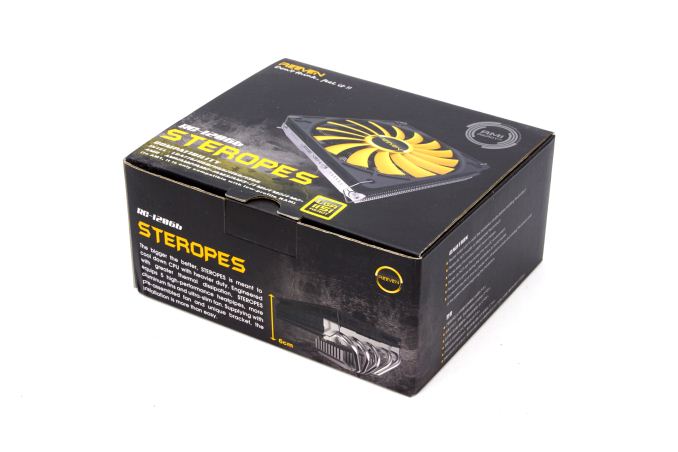
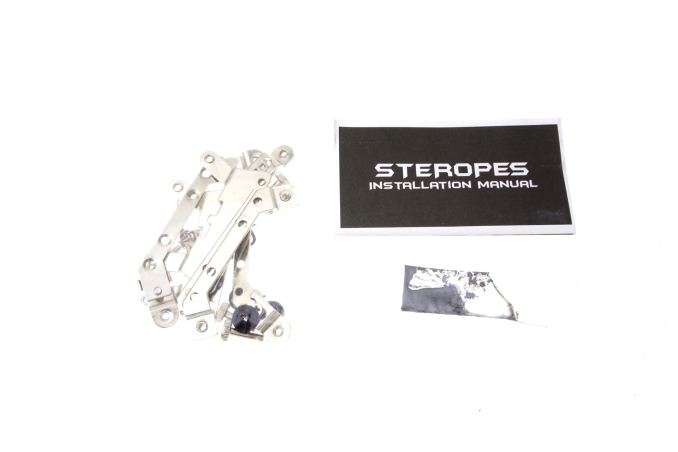
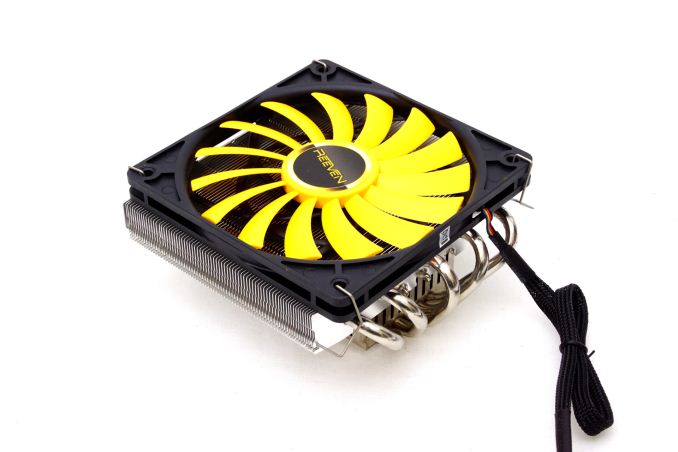
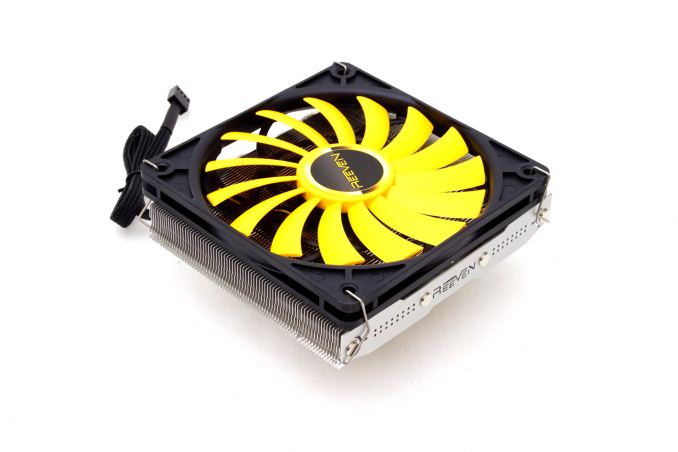
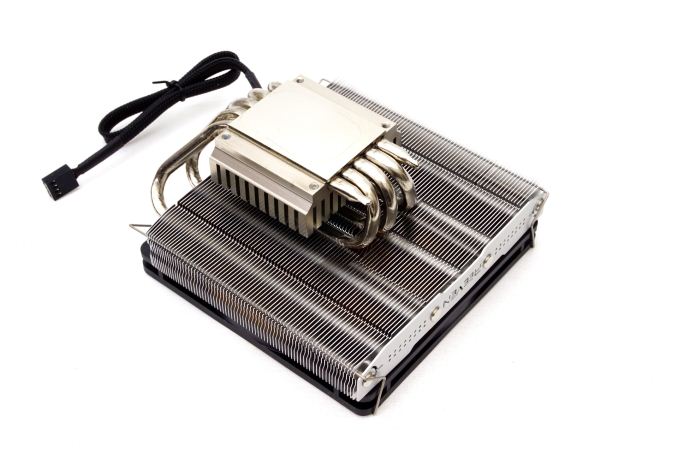









43 Comments
View All Comments
wolfemane - Wednesday, January 18, 2017 - link
This is from my personal experience only, but the L9i didnt cool much better than a stock Intel cooler. It just did it much quieter. I had one on an i3-6100 in a node 202 build and in a Bitspheonix prodogymitx case. I then swapped the 6100 for a 6600k and that was beyond the l9is capabilities in either case. But that was to be expected. Even noctua doesn't recommend the L9i for anything more than 65w unless in a very well ventilated case.
xenol - Wednesday, January 18, 2017 - link
I would've liked to see the heatsinks installed on a system in order to gauge how it might look on my own builds. Cooling performance is important, but I'm willing to sacrifice that if these coolers make it a pain to work on my computer.bigboxes - Wednesday, January 18, 2017 - link
I've got an AXP-200R in my HTPC. I didn't need to go that low of profile, but the huge fan is super quiet and perfect for my application. At 73mm of height clearance I'd think that the Thermalright model would have been in your review.AXP-200R website: http://thermalright.com/product/axp-200r/
AXP-200R in use: http://i256.photobucket.com/albums/hh175/bigboxes/...
stlouis1 - Thursday, January 19, 2017 - link
I've been using AXP-100's as my go to for small form factor builds. It would have actually been nice to see the AXP-100/200 in this review for comparison as the Thermalright options have become hard to acquire in Canada (not sure about elsewhere)genzai - Wednesday, January 18, 2017 - link
Can you add a bit more pertinent info? Like full socket compatibility. (2011.3?)Also can you talk about Rack U height as that is another place LP coolers are used. What is the minimum RU these coolers would fit?
Thanks
Ranger1065 - Thursday, January 19, 2017 - link
Good heavens Anandtech, a new article! Don't overdo it now. It seems to me more effort is expended on Tweets these days. Interesting read though.colonelclaw - Thursday, January 19, 2017 - link
A word of caution to those of you putting together a mini-ITX build - I had to return 3 coolers as they wouldn't fit on an Asus MAXIMUS VIII IMPACT. In all 3 cases, it wasn't because the cooler was too tall (I did measure the height available), but because the cooling pipes or whatnot would hit components on the motherboard.I can't speak for other motherboards, but the components on the Asus are so tightly packed in and all around the CPU socket, that available width is just as important.
zodiacfml - Thursday, January 19, 2017 - link
awesome performance but too big and pricey. the Reeven seems to be good value here as it is tiny compared to a Hyper 212 evo.Voldenuit - Thursday, January 19, 2017 - link
Any VRM temperature measurements? And comparison to tower coolers? One of the advantages of top down coolers compared to conventional towers is their cooling of motherboard components, so would be interested to see.losonn - Saturday, January 21, 2017 - link
Any chance of updating this roundup with results from the significantly more relevant Noctua NH-L9x65?The NH-L9x65 is a comparable size / weight / height / price to both the Reeven & Phanteks coolers featured here where the NH-C14S is *double* the height and price of the other coolers...